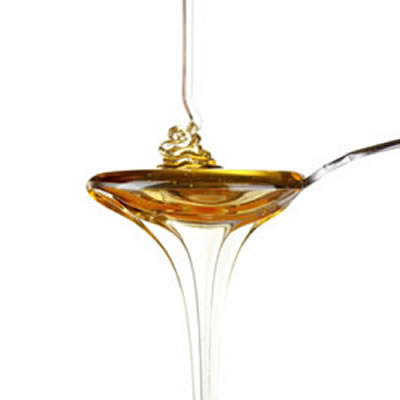Origin
Bees are the original producers of invert sugar—honey. Sometimes commercial invert sugar is called artificial honey. In the early 1800s, M. Dubrunfaunt first explained the phenomena of sugar inversion. He hypothesized that when sucrose was heated with a dilute acid, it became a syrupy mixture of glucose and fructose in equal ratios.1
The name “invert” sugar was assigned in 1830, when Biot discovered that a plane of polarized light passed through a sucrose solution rotates it right, but when passed through the same solution heated with acid the light rotates left.1 The process of heating sugar with acid is therefore deemed sugar inversion.
Function
As a baking ingredient, this form of sugar can be substituted for sucrose in almost every application. Functionally, it is preferred to sucrose because of its ability to:
- Increase sweetness and balance acidity. It is sweeter than sucrose with a relative sweetness of 1232 compared to sucrose at 100
- Provide nourishment for yeast
- Provide consistency, it is easy to measure and disperse
- Control crystallization in icings, so mouthfeel is soft
- Retain moisture, so bread remains fresh and does not dry out
- Enhance color and flavor, because simple sugars enhance maillard reaction
Nutrition
Invert sugar is a carbohydrate, supplying 4 calories per gram. It consists of simple sugars that are quickly absorbed in the bloodstream.
In 2016, FDA announced the new Nutrition Facts Label, which goes in effect beginning in 2020. At this time, added sugar, such as invert sugar, will be required to be identified on the nutrition facts label as added sugar.3
Commercial production
The conventional method to produce invert sugar is to hydrolyse sugar in the presence of acid and heat. This method, however, lacks efficiency because of a low conversion rate, high energy consumption and the development of off colors.4
Newer methods of producing invert sugar include utilizing the immobilized enzyme invertase to hydrolyze purified sugar. Also, scientists are investigating resin technology which is a more cost effective and efficient method to invert sugar cane juice.2
Application
A baker must consider application and process when substituting invert sugar into recipes that call for sugar. It is not a 1:1 substitution. It is sweeter and has different properties.
These different properties, such as its higher affinity for water, make invert sugar preferred for low fat baked goods or soft cookies. Properties, such as invert sugar’s ability to enhance color, may prompt a baker to adjust cooking temperature and time to control browning reaction.
FDA regulations
In the United States, invert sugar is affirmed as a Generally Recognized as Safe (GRAS) food substance. (21 C.F.R. § 184.1859 2018).
References
- Stroud, J. “Commercial Invert Sugar”, Ind Eng Chem. 16 (3). 1924. Pp 307-310. DOI: 10.1021/ie50171a037
- Gehlawat, JK. “New Technology for invert sugar and high fructose syrups from sugar cane”, Ind J Chem Tech. 8. 2001. pp. 28-32.
- FDA. “Changes to the Nutrition Facts Label”. 2/08/2019. www.fda.gov/Food/GuidanceRegulation/GuidanceDocumentsRegulatoryInformation/LabelingNutrition/ucm385663.htm. Accessed 15 Feb. 2019.
- Upadhyay, LSB, Verma, N. “Highly efficient production of inverted syrup in an analytical column with immobilized invertase”, J Food Sci Technol. 51 (12). 2013. pp 4120-5.

